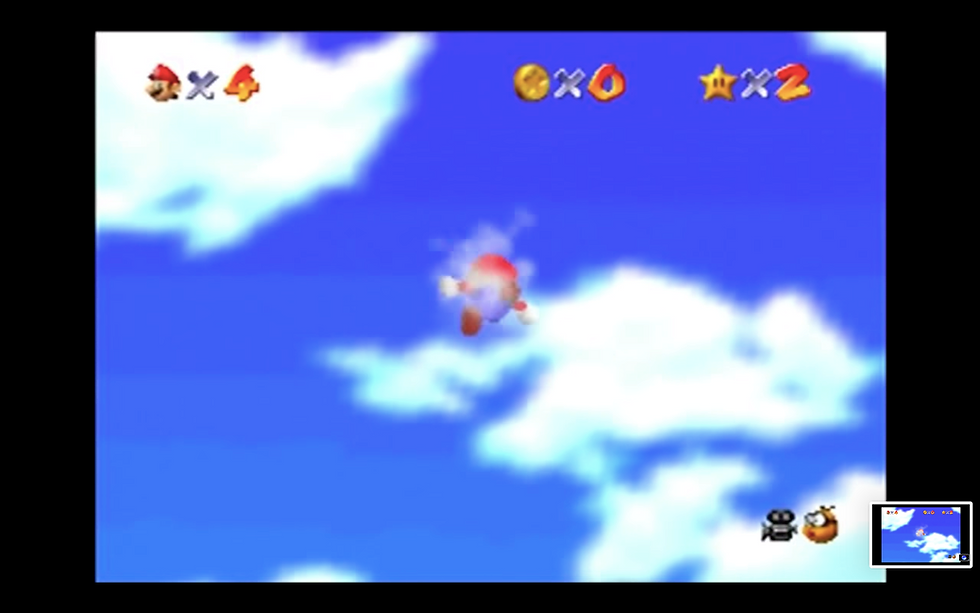Game Review: GoldenEye 007
- lsherwin
- Oct 18, 2019
- 3 min read
As one of the world’s earliest first-person shoot games, GoldenEye 007 is a game developed by Rare and published in 1997 for the Nintendo 64 game console. This story portrays James Bond, a British secret agent, as he fights to prevent a financial crisis in London caused by a remote satellite weapon. The player observes the low-quality three-dimensional graphics through the perspective of Bond, who wields a standard-issue suppressed pistol as his only weapon. He continues through each set of levels with specific missions to complete along the way, which puts him closer to reaching the final goal of defeating the criminal syndicate. Although the game does require taking out enemies to advance, the level of violence is much less than today’s first-person shooter games. GoldenEye 007 provides a great example of a reduced level of physical violence through key game design choices, as well as emotional violence through a somewhat hidden game mechanic.
As soon as the player begins the first level of GoldenEye 007, he or she learns quickly that the enemies taken out by Bond appear manipulated and almost theatrical as their time in the game comes to a close. They fall slowly, sometimes wiggling or flailing their body parts as they drop to the ground. This portrayal of the enemies dying could be related to that of a play or other live production that needs to emphasize the dramatic passing of a character. Couple this with the lack of blood and gore throughout the game, and Rare has created a game that could hardly become less violent without removing the weapons. This opens the game up to a much larger crowd of people, namely the lower age range. By having the game’s violence reduced drastically in comparison to today’s shooting games, young children with a desire to play GoldenEye 007 will have a much easier time convincing their parents that it is appropriate. Many adults believe that youth and young adult violence is correlated with their playing of violent video games. Although many studies have shown that there is no correlation or the results are inconclusive, parents still choose to err on the side of caution and restrict the games their children play. However, Rare games may have been trying to avoid this issue by having GoldenEye 007 show that first-person shooter games can be less violent than other games.
Playing this game for the first time shows you how difficult first-person shooters are, especially when playing on a Nintendo 64 controller. It is far from an ergonomic design, and the controls within the game are not any easier to operate. The initial vertical looking is inverted, making the player look up when the analog stick is pushed down and vice versa. However, analyzing the settings further leads the player to notice a key feature within the game: auto-aim. This allows the player to have far less than perfect aim in order to eliminate enemies and continue playing. This feature that allows players to harm their enemies without actually shooting at them has a much deeper meaning. The act of shooting shows the intent of the player to deal damage, and, even though the player may not be hitting the enemy directly, it still shows that an attempt to deal damage can still cause harm. This idea applies again to the accusations of violence on the youth and young adults playing violent games. This mechanic can show that even if an action is not meant to directly harm another, it could still cause harm to that person. This idea would most likely not be identified by the average player, which allows it to remain unnoticed in gameplay. However, this subtlety can reach the gamer’s thoughts without them having to think about it or reducing their enjoyment of the game. Therefore, GoldenEye 007 not only chooses to reduce the amount of physical violence in the game, but it also alludes to the reduction of emotional violence between people as well.
GoldenEye 007 could be viewed as one of the early first-person shooters to reach the masses. However, there is so much more meaning behind a simple shooting game and secret agent story. While the game forces violence upon its player, it chooses certain elements to reduce its violence for the gamer, both physically and emotionally, to create a much more inclusive experience for all maturity levels.




Comments